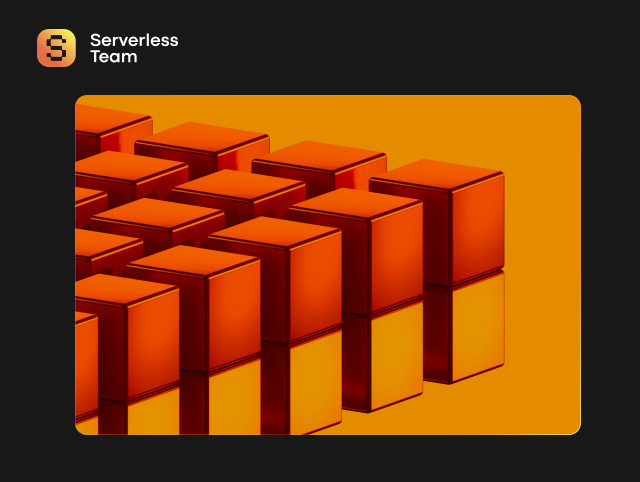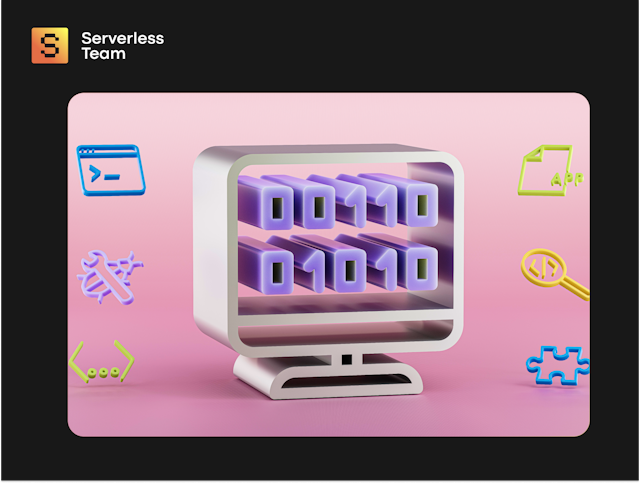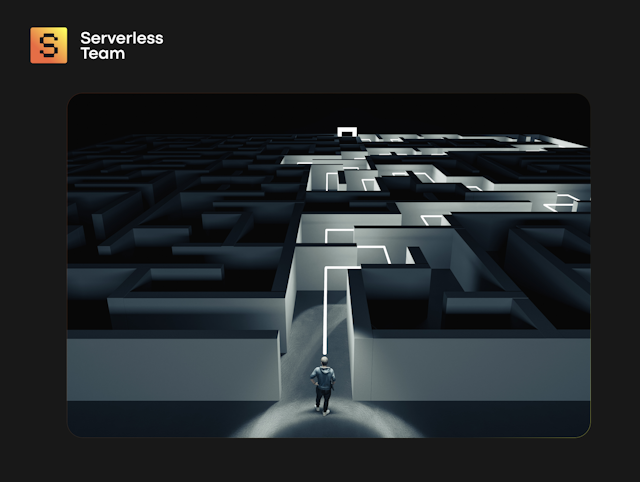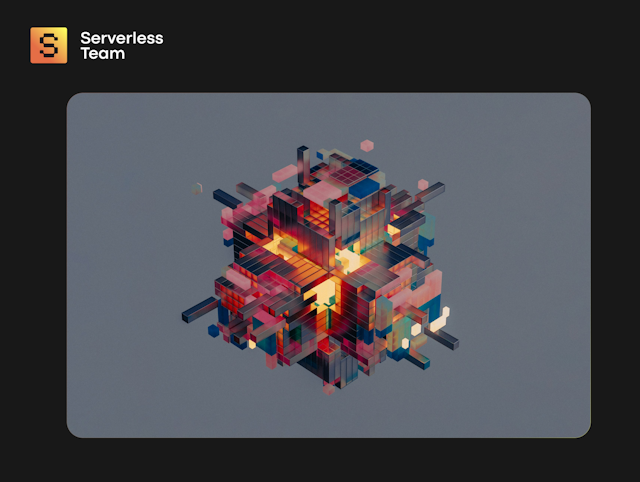Before starting with serverless databases, let's begin with a short recap of serverless computing. In a nutshell, it's a cloud computing model where developers focus on writing code without managing servers. In this paradigm, cloud providers dynamically handle server resources, automatically scaling them as needed, and bill customers based on actual usage.
It's cost-efficient, as you pay as you go, and amazingly scalable, as the system automatically tunes to handle varying workloads. And, of course, it reduces operational complexity, allowing developers to focus solely on delivering value. It offers a server-free development experience with tons of advantages.
And serverless databases further enhance this approach. They offer a database-as-a-service (DBaaS) model, allowing access to fully managed and scalable databases without addressing the underlying infrastructure.
Now, let's go deeper and explore the top databases for serverless applications on the market, their benefits, and key features.

We take care of serverless development so you can focus on your business
Don't want to wait for our site launch? Let's talk about your idea right now.


Benefits of Using Serverless Databases for Modern Applications
But before we go into discussing separate serverless database systems and their providers, we want to walk you through a range of benefits that make them an ideal choice for modern application development.
Here are some of the key advantages of using serverless databases:
Auto-scaling and Geographical Distribution
No more worries about traffic spikes. Serverless databases automatically scale resources based on demand, ensuring seamless handling of fluctuating workloads. Whether your application experiences sudden surges in traffic or needs to accommodate growing data, serverless databases can quickly scale up or down to meet your requirements without any manual intervention.
Moreover, a serverless database also scales geographically, moving and storing your data worldwide to provide a better experience to your users across the globe.
Fully Managed Service
Serverless databases are managed by cloud providers, meaning there’s no need for your team to worry their heads about infrastructure maintenance, backups, or updates. This unties the hands of your developers to focus solely on building and improving applications, streamlining the development process, and reducing operational overhead.
Plus, have you seen their security precautions? Serverless databases ensure that every app that interacts with the same database goes through the same security access protocol. Meaning that it reduces the attack surface, taking that worry off your shoulders.
Availability
Serverless databases give you the ability to reduce latency. They are designed for high availability, ensuring data is accessible and protected from failures.
Cloud providers provide robust replication and redundancy mechanisms, ensuring data is stored across multiple locations, reducing the risk of data loss and downtime.
Simplified Backup and Recovery
Your data won’t suddenly vanish if things go awry. Cloud providers will handle automated backups and provide simple recovery options, so you won’t have to add data backup strategies to your already full plate.
Shorter GTM
By using serverless databases, you can rapidly prototype and deploy apps, shortening the time-to-market for new features and updates. This agility is crucial if you want to outdo your competitors and bring new features to users asap,
With their scalability, cost-effectiveness, managed nature, high availability, and seamless integration, serverless databases make them an excellent choice for building and deploying applications that must be efficient, flexible, and responsive to changing user demands.
Looking for a serverless database to settle down with? Read this article to know the Factors to Consider When Choosing a Serverless Database.

Kyrylo Kozak
CEO, Co-founderGet your project estimation!

Drawbacks of Serverless Databases
Of course, serverless databases are it if you want to reduce the operational burden to maintain the health and capacity of the database properly. However, in our experience, despite a lot of benefits mentioned earlier, serverless databases have their own downsides.
Here are the 4 major drawbacks that can be dealbreakers for your particular case:
Cold Start
Serverless databases can experience delays when responding to the first request after a period of inactivity. It’s commonly referred to as a 'cold start'. This can affect the performance of the app, which makes them impractical for some types of solutions.
Lower Customizability
Typically, serverless databases offer less control and customizability compared to traditional ones. This might not suit apps with specific needs.
Guaranteed Vendor Lock-in
Using serverless databases most often ends up in a vendor lock-in, which makes it super hard to switch providers (but not impossible).
Tough Designing Process
Some databases like DynamoDB have outstanding performance yet require specific knowledge to set up, and the design process can be quite demanding.
Of course, it doesn't mean you have to forget about serverless databases for good. Just pay attention to what's most important to your particular project.
Serverless Databases for Modern Applications
Now let’s explore some of the best databases for serverless applications that are making waves in the industry and understand how they can empower your modern applications.
Amazon Aurora
Amazon Aurora, a star in the serverless database universe, boasts compatibility with MySQL and PostgreSQL, delivering impressive performance and scalability. It removes the burden of manual database management, ensuring automated backups and point-in-time recovery for high availability.
Key Features:
- Automated backups and point-in-time recovery for data durability.
- Global replication for disaster recovery and low-latency access.
- Seamless integration with AWS services for efficient development.
Pricing: Amazon Aurora adopts a pay-as-you-go pricing model, billing users based on storage and processing resources utilized.
Upstash
As a serverless database built on top of Redis, Upstash guarantees low-latency data access, perfect for real-time applications. Its integration with popular serverless platforms like AWS Lambda and Vercel streamlines development.
Key Features:
- Low-latency data access for real-time applications and caching.
- Seamless integration with serverless environments for efficient development.
- Horizontal scaling to accommodate growing data and workloads.
Pricing: Upstash offers a transparent pricing model based on the number of requests and storage used.
Xata
Xata is a serverless data platform that provides unified APIs for multiple databases, including PostgreSQL and Redis. Its real-time data streaming and analytics capabilities empower data-driven applications.
Key Features:
- Unified API for multiple databases simplifying application development.
- Support for real-time data streaming and analytics.
Pricing: Xata's pricing is consumption-based, ensuring users pay only for the resources they use.
PlanetScale
PlanetScale is a serverless, multi-cloud database designed for large-scale applications. Its sharded database architecture and robust data consistency are ideal for mission-critical use cases.
Key Features:
- Sharded database architecture for scalability and performance.
- Robust data consistency and support for advanced SQL queries.
Pricing: PlanetScale's pricing model varies based on the number of transactions and storage used.
CockroachDB
CockroachDB is an SQL serverless relational database with strong consistency and scalability. It ensures high availability with its distributed architecture and supports ACID transactions.
Key Features:
- Distributed architecture for high availability and data replication.
- Support for ACID transactions and multi-region deployments.
Pricing: CockroachDB offers a pricing model based on the number of nodes and required support level.
CosmosDB
CosmosDB, provided by Microsoft Azure, is a globally distributed, multi-model database that supports key-value, document, graph, and column-family data models.
Key Features:
- Support for multiple data models for versatile applications.
- Low-latency access to data from multiple regions with five consistency models.
Pricing: CosmosDB follows a pay-as-you-go model, charging users based on requests, storage, and data transfer.
SurrealDB
SurrealDB is a user-friendly, fully managed serverless database that simplifies data storage and retrieval, making it an excellent choice for data management.
Key Features:
- Simplified API for data storage and retrieval, reducing development complexity.
- Automatic data indexing and query optimization.
Pricing: SurrealDB's pricing is based on the amount of data stored and the number of API calls.
Bit.io
Bit.io is a cloud-native, serverless data platform that fosters collaboration among teams by simplifying data sharing and integration with popular BI tools.
Key Features:
- Easy data sharing and collaboration for enhanced team productivity.
- Support for SQL queries and integration with BI tools.
Pricing: Bit.io offers a free tier for personal use, and its pricing varies based on the number of users and data size.
Fauna
Fauna is a serverless, globally distributed database with an API-first approach and built-in security features.
Key Features:
- API-first approach for easy data access and manipulation.
- Support for GraphQL and robust security measures.
Pricing: Fauna's pricing varies based on the resources used, ensuring cost efficiency for users.
The fully managed nature of serverless programming and databases is a way to free yourself from manual database management and bring your full focus to innovation and delivering exceptional user experiences.
Whether you're building real-time applications, data-driven platforms, or large-scale systems, serverless databases are the way forward. Explore your serverless database options and embrace their powers to advance your app.
Need help to figure out what serverless cloud database to pick? No worries, we’re here for you.
Our Opinion
Managing databases yourself is hard. Using managed and serverless services allows you to focus on delivering value rather than getting bogged down in operational details. This is crucial for small-to-medium businesses and startups. But before you dive head-in, here is a list of things to always keep in mind:
- Look closely at the services you’re using: understand their limitations and the cost structure.
- Design for failure because things will fail, and that's okay. Create your systems to be resilient to these failures. Always use multi-AZ deployments to protect against the failure of a single availability zone.
- Constantly monitor your systems closely and react to feedback quickly. This way, new access patterns and an increased volume of data will affect your billing less likely.
Conclusion
Let’s wrap it up. Serverless databases are the future of modern app development. And it’s already here. By offering fully managed and scalable solutions, cloud providers ease the burden of infrastructure maintenance so that you can pay attention to more important stuff. The benefits of serverless databases include auto-scaling capabilities to handle varying workloads, global accessibility through geographical distribution, and simplified backup and recovery options.
In this article, we have covered 9 leading serverless databases with their key features and pricing details. Amazon Aurora stands out for its impressive performance and scalability, while Upstash guarantees low-latency data access for real-time applications. Xata provides unified APIs for multiple databases, and PlanetScale excels in shared database architecture and data consistency. CockroachDB ensures strong consistency with ACID transactions, and CosmosDB supports various data models and low-latency access. SurrealDB simplifies data storage and retrieval, while Bit.io fosters team collaboration with easy data sharing and BI tool integration. Lastly, Fauna adopts an API-first approach with built-in security features.
So, serverless databases empower efficient, flexible, and responsive application development. By exploring and adopting one of these top serverless databases, you can focus on innovation and delivering exceptional user experiences, as these robust solutions handle day-to-day tasks.





